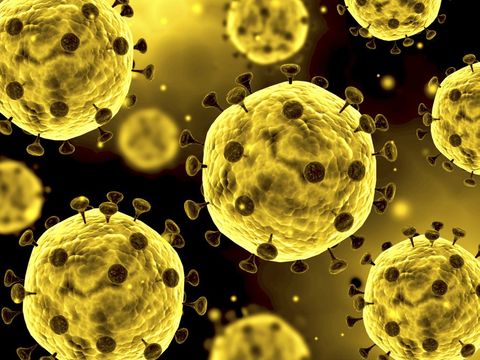Article Courtesy of Procter & Gamble - CloroxPro
2019 Novel Coronavirus (2019-nCoV)
What are coronaviruses?
Coronaviruses (CoV) are a family of enveloped virus that was first discovered in the 1960s. Coronaviruses are most commonly found in animals, including camels and bats, and are not typically transmitted between animals and humans. However six strains of coronavirus were previously known to be capable of transmission from animals to humans, the most well-known being Severe Acute Respiratory Syndrome (SARS) CoV, responsible for a large outbreak in 2003, and Middle Eastern Respiratory Syndrome (MERS)
CoV, responsible for an outbreak in 2012.
The latest strain, known as 2019 Novel Coronavirus or 2019-nCov, is the seventh strain now known to have been transmitted from animals to humans at an animal and seafood market in Wuhan, China. The growing number of patients who have not had exposure to animal markets suggest that person-to-person transmission is occurring.
What are the symptoms of a human coronavirus infection?
Human coronavirus usually causes mild to moderate upper respiratory tract illness, similar to a common cold. Symptoms often include runny nose, headache, cough, sore throat, and fever. Most people contract the illness at some point in their lives and it usually only lasts for a short time. Sometimes human coronaviruses can cause lower respiratory tract infections, such as pneumonia or bronchitis. This is more common in infants, the elderly, or individuals with weakened immune systems. In some serious cases, such as with 2019-nCoV, the virus can cause severe acute respiratory syndrome, pneumonia, kidney failure, and death.
How are coronaviruses spread?
Coronaviruses are typically spread through the air via coughing or sneezing, via contact with an infected person or contaminated surfaces, and sometimes, but rarely, via fecal contamination. 2019-nCov is thought to have originally spread from animals to humans, but there is growing evidence of person-to-person transmission. This pattern of transmission was also reported with SARS CoV and MERS CoV.
Why are human coronaviruses and particularly nCOV a concern?
Most people get infected with a human coronavirus at some point in their lives and experience cold-like symptoms for a few days before recovering. However, novel coronaviruses—such as MERS-CoV, SARS-CoV, and 2019-nCoV cause severe symptoms including fever, cough and shortness of breath that can lead to pneumonia and even death. These coronaviruses can quickly spread from person to person and can lead to widespread outbreaks when infected individuals travel to different countries. As with most emerging viruses, the risk depends on a number of factors including ease of transmission, severity of symptoms and prevention and treatment options available. In the case of nCoV, there is neither a vaccine nor specific treatment.
Infection Control Measures
- Hand hygiene: Wash hands often with soap and water for at least 20 seconds. Use alcohol-based hand sanitizer when soap and water are not available. Avoid touching your eyes, nose, and mouth with unwashed hands.
- Respiratory hygiene and cough etiquette: Cover your nose and mouth with a tissue when you cough or sneeze, then throw the tissue in the trash.
- Avoid contact with infected individuals, as possible.
- Clean and disinfect surfaces and objects with an EPA-registered disinfectant.
- For 2019-nCov, the CDC also recommends a mask for confirmed or suspected individuals, eye protection for healthcare workers, and implementing both contact and airborne precautions in addition to standard precautions.
The CDC provides useful guidance and resources for coronavirus and 2019-nCoV infection control measures. These should all be implemented when patients are suspected of being infected with a coronavirus.
EMAIL YOUR VALUE FIRST STATE REPRESENTATIVE FOR MORE INFORMATION


